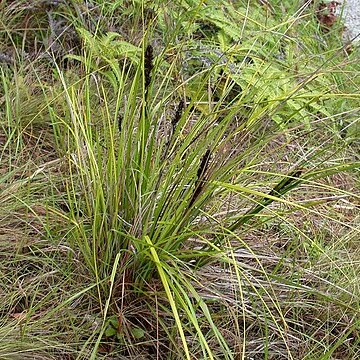Roots stout, rigid. Rhizomes short, woody. Culms 0.5-1.5 m tall, robust, hollow, noded. Leaves basal and cauline; sheath brown to reddish brown, 10-20 cm; leaf blade 0.4-1.8 m × 0.7-1.2 cm, papery to leathery, margin scabrous, apex acuminate. Inflorescence a contracted panicle, spikelike, 14-40 × 2-3 cm, bearing 7-20 fascicles of partial panicles; partial panicles ovoid to ellipsoid, 2-5 cm; peduncles short, rigid, enclosed by inflorescence bract sheath. Spikelets numerous, densely congested, fusiform, 8-10 mm, 1-flowered. Glumes 8-10, initially yellowish brown but maturing to dark brown; basal 4-6 glumes ovate-lanceolate, papery, rigid, 1-veined, apex acuminate; apical 2 or 3 glumes broadly ovate, much shorter, margin apically ciliolate, apex emarginate to rounded; apicalmost glume bearing a bisexual flower. Perianth bristles absent. Stamens 3. Stigmas 3. Nutlet pale brown when young but maturing black, obovoid-oblong, 4-4.5 × 1.7-2 mm, 3-sided, smooth, shiny. Fl. and fr. Mar-Dec.

